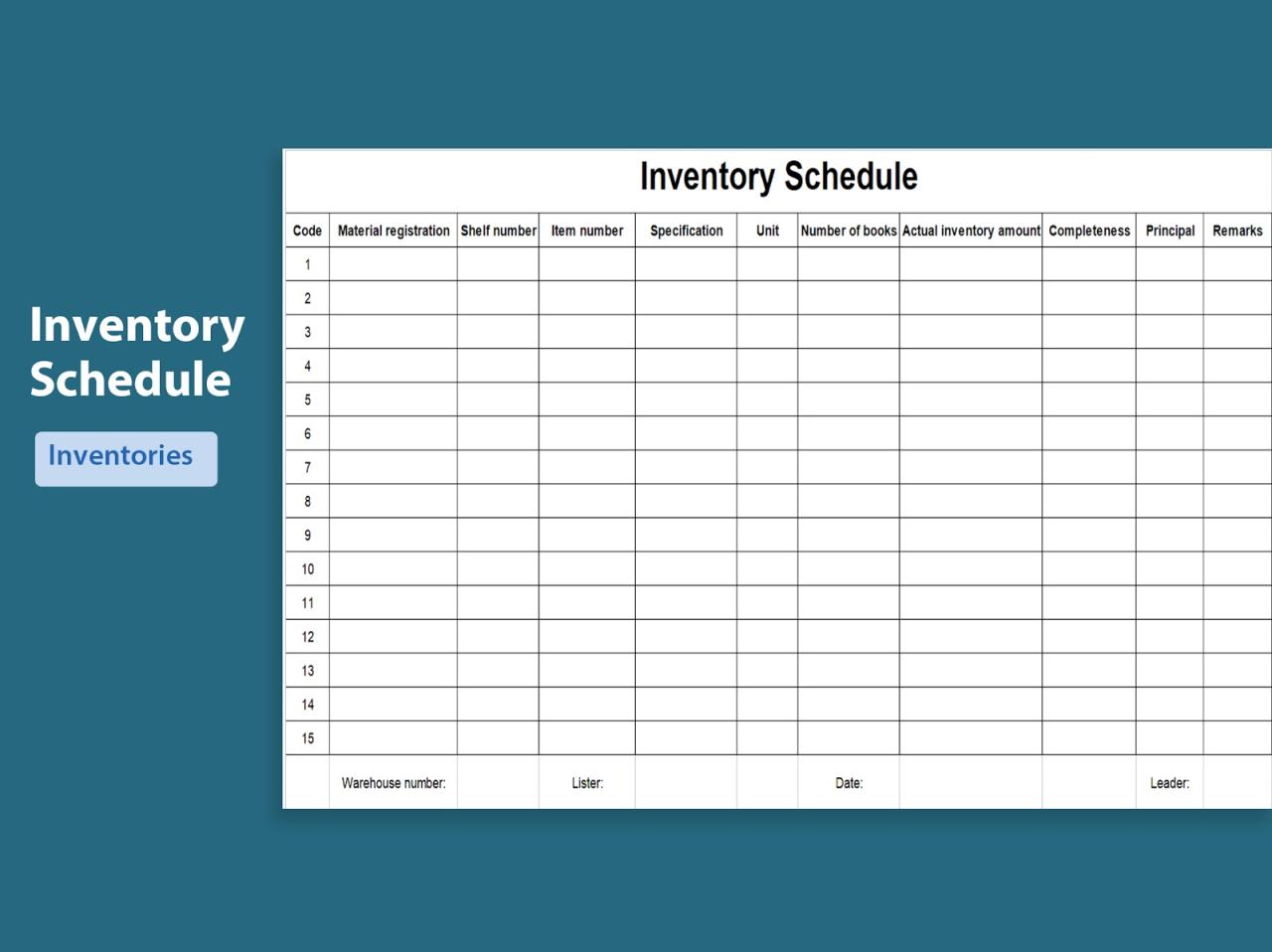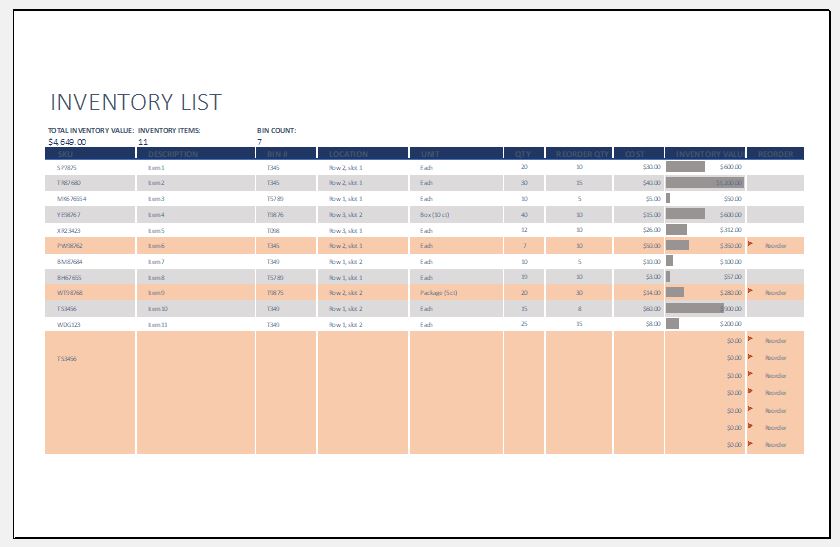Business inventory charts – In the realm of business, inventory charts reign supreme, offering a comprehensive snapshot of your inventory levels and trends. These invaluable tools empower businesses with the insights necessary to make informed decisions, optimize operations, and maximize profitability.
By harnessing the power of inventory charts, businesses can gain a competitive edge, streamline their supply chains, and ensure the availability of the right products at the right time.
Creating and Managing Inventory Charts

Inventory charts are valuable tools for businesses to track and manage their inventory levels. Creating and managing these charts effectively is essential for maintaining accurate and up-to-date inventory records.
Steps Involved in Creating an Inventory Chart
- Identify the items to be tracked:Determine the specific items that need to be tracked in the inventory chart.
- Establish a unit of measure:Define the unit of measure that will be used to quantify the items, such as pieces, pounds, or gallons.
- Create a data table:Set up a data table with columns for the item name, unit of measure, and quantity on hand.
- Populate the data table:Enter the initial inventory quantities for each item.
Interpreting and Analyzing Inventory Charts

Inventory charts are powerful tools that can help businesses track and manage their inventory levels. By understanding how to interpret and analyze these charts, businesses can identify potential issues and opportunities, and make better decisions about their inventory management strategies.
One of the most important things to understand about inventory charts is the data that they present. These charts typically show the following information:
- The total amount of inventory on hand
- The average inventory level
- The maximum and minimum inventory levels
- The rate of inventory turnover
This data can be used to track inventory levels over time and identify trends. For example, a business may see that its inventory levels are increasing over time, which could indicate that the business is not selling its products quickly enough.
Alternatively, a business may see that its inventory levels are decreasing over time, which could indicate that the business is not ordering enough products to meet demand.
Analyzing Inventory Levels and Trends
Once a business understands the data that is presented in inventory charts, it can begin to analyze the charts to identify potential issues and opportunities. One of the most important things to look for is trends in inventory levels. For example, a business may see that its inventory levels are increasing over time, which could indicate that the business is not selling its products quickly enough.
Alternatively, a business may see that its inventory levels are decreasing over time, which could indicate that the business is not ordering enough products to meet demand.
Another important thing to look for is the rate of inventory turnover. This ratio measures how quickly a business is selling its inventory. A high inventory turnover ratio indicates that the business is selling its products quickly, while a low inventory turnover ratio indicates that the business is not selling its products quickly enough.
Identifying Potential Issues and Opportunities
By analyzing inventory charts, businesses can identify potential issues and opportunities. For example, a business may see that its inventory levels are too high, which could lead to increased storage costs and spoilage. Alternatively, a business may see that its inventory levels are too low, which could lead to lost sales and customer dissatisfaction.
Inventory charts can also be used to identify opportunities for improvement. For example, a business may see that its inventory turnover ratio is low, which could indicate that the business could improve its sales performance by selling its products more quickly.
Alternatively, a business may see that its inventory levels are increasing over time, which could indicate that the business could reduce its ordering costs by ordering less frequently.
Using Inventory Charts for Decision-Making: Business Inventory Charts
Inventory charts are powerful tools that can help businesses make informed decisions about their inventory management. By providing a visual representation of inventory levels, these charts can help businesses identify trends, patterns, and potential problems.
For example, a business might use an inventory chart to track the inventory levels of a particular product over time. This chart could help the business identify seasonal trends in demand, as well as any potential stockouts or overstocks. The business could then use this information to make informed decisions about how much inventory to order and when to order it.
Forecasting and Planning
Inventory charts can also be used for forecasting and planning. By analyzing historical inventory data, businesses can make predictions about future demand. This information can then be used to develop production and purchasing plans that ensure that the business has the right amount of inventory on hand to meet customer demand.
Case Studies and Examples
![]()
Inventory charts are valuable tools for businesses of all sizes. They can help businesses track inventory levels, identify trends, and make informed decisions about purchasing and production.
There are many different ways to use inventory charts. Some common applications include:
Case Studies
- Tracking inventory levels over time to identify trends and patterns.
- Comparing inventory levels to sales data to identify potential shortages or overstocking.
- Forecasting future inventory needs based on historical data.
- Making decisions about purchasing and production based on inventory levels and trends.
Examples
- A manufacturing company uses an inventory chart to track the levels of raw materials, work-in-process, and finished goods.
- A retail store uses an inventory chart to track the levels of inventory on hand for each product.
- A wholesaler uses an inventory chart to track the levels of inventory in their warehouse.
Table: Comparison of Inventory Chart Formats, Business inventory charts
There are many different types of inventory charts, each with its own advantages and disadvantages. The following table compares the most common types of inventory charts:
| Chart Type | Advantages | Disadvantages |
|---|---|---|
| Line Chart | Easy to read and understand. | Can be difficult to compare multiple items. |
| Bar Chart | Good for comparing multiple items. | Can be difficult to see trends over time. |
| Pie Chart | Good for showing the proportion of different items. | Can be difficult to compare multiple items. |
| Table | Most flexible format. | Can be difficult to read and understand. |
Final Wrap-Up

In conclusion, business inventory charts are indispensable tools for businesses seeking to gain control over their inventory management. By providing real-time visibility into inventory levels, trends, and potential issues, these charts empower businesses to make data-driven decisions, reduce costs, and enhance customer satisfaction.
Embracing the use of inventory charts is a strategic move that can transform the way businesses operate, leading to increased efficiency, profitability, and long-term success.
Quick FAQs
What are the key benefits of using business inventory charts?
Business inventory charts provide numerous benefits, including improved inventory visibility, reduced stockouts, optimized purchasing decisions, enhanced customer satisfaction, and increased profitability.
How do I create an effective inventory chart?
Creating an effective inventory chart involves gathering accurate data, selecting the appropriate chart type, and ensuring regular updates to maintain its accuracy.
What are some common types of inventory charts?
Common types of inventory charts include ABC analysis charts, inventory turnover charts, and reorder point charts.
How can I use inventory charts to identify potential issues?
By analyzing inventory charts, businesses can identify potential issues such as overstocking, understocking, and slow-moving items, enabling them to take proactive measures.